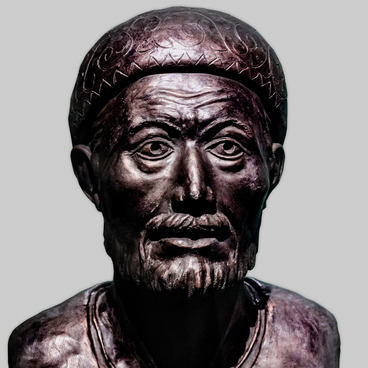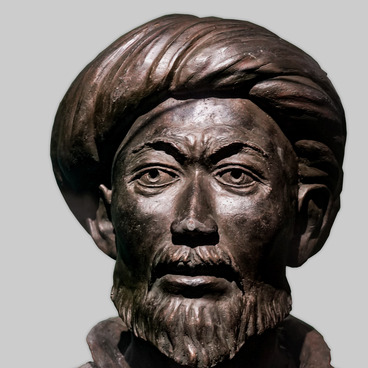Tarkhan label of khan Sahib-Giray from the museum’s collection is the only document of the Kazan Khanate that reached our days. It was created in 1523. In 1920, the historian Sayyid Vakhidov bought it from the peasant Rakhmatulla Akhmarov in the village of Mamalai, Mamadysh district. The original of the label is kept in the funds of the National Museum of the Republic of Tatarstan.
The document is a scroll of two sheets of oriental paper glued together. The text contains 23 lines written in Arabic script, at the end of the label there is an imprint of a square scarlet tamga (stamp). The initial part of the label has been lost.
Tarkhan letters gave their owners the right to exemption from taxes, imposts, duties. Tarkhan is a privileged class of the Turkic nobility. The title was used by the Turks, Mongols and other steppe peoples. Together with the title of Tarkhan, a person received a special khan label (letter). Their owners enjoyed great rights: the land and other property of the tarkhan were inviolable. He was exempted from duties from vineyards, barn duties and from payment for a threshing floor and from yasak from irrigation ditches. The label forbade demanding duties, weight, road fees, “payment for the guard” from the tarkhan. He was free from the duty of giving horses to official couriers, lodging, extortion, extraordinary taxes, and any kind of oppression. Tarkhans held a special position in a legal respect as well: they could freely enter the khan’s office, and were not responsible for the first nine offences.
The letter prescribed how to behave with the owner: ‘When they are (somewhere) and when they leave, their people and their servants, and their luggage, and their cattle, do not inflict any misfortune and in no way interfere and harass; demand requests, duties and fees for costs, their livestock and horses… and let them not bury their possessions; let them not be forced into their homes as ambassadors, let them not take gift expenses, land loans, household tax and do not require provisions and fodder (at stands); let no harm or damage be done to them from anyone’.
The label also contained a listing of the categories of government officials and types of taxes in the Kazan Khanate.
The document is a scroll of two sheets of oriental paper glued together. The text contains 23 lines written in Arabic script, at the end of the label there is an imprint of a square scarlet tamga (stamp). The initial part of the label has been lost.
Tarkhan letters gave their owners the right to exemption from taxes, imposts, duties. Tarkhan is a privileged class of the Turkic nobility. The title was used by the Turks, Mongols and other steppe peoples. Together with the title of Tarkhan, a person received a special khan label (letter). Their owners enjoyed great rights: the land and other property of the tarkhan were inviolable. He was exempted from duties from vineyards, barn duties and from payment for a threshing floor and from yasak from irrigation ditches. The label forbade demanding duties, weight, road fees, “payment for the guard” from the tarkhan. He was free from the duty of giving horses to official couriers, lodging, extortion, extraordinary taxes, and any kind of oppression. Tarkhans held a special position in a legal respect as well: they could freely enter the khan’s office, and were not responsible for the first nine offences.
The letter prescribed how to behave with the owner: ‘When they are (somewhere) and when they leave, their people and their servants, and their luggage, and their cattle, do not inflict any misfortune and in no way interfere and harass; demand requests, duties and fees for costs, their livestock and horses… and let them not bury their possessions; let them not be forced into their homes as ambassadors, let them not take gift expenses, land loans, household tax and do not require provisions and fodder (at stands); let no harm or damage be done to them from anyone’.
The label also contained a listing of the categories of government officials and types of taxes in the Kazan Khanate.


